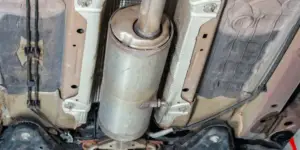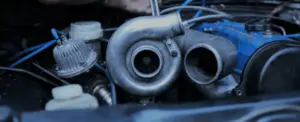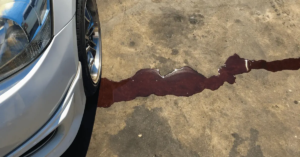It is possible for a screw to stay in your tire indefinitely before it starts leaking air.
A lot depends on how long the screw is (which is impossible to tell until you get it out!) and its location in the tire.
Generally speaking, a screw between the tread blocks or on a side wall or shoulder is more likely to cause your tire to leak than a screw embedded in a tread block.
The reason for this is quite simple. A tread block is thicker than the side wall or the gap between the tread blocks.
Therefore, it stands to reason that any screw is less likely to penetrate through the tire tread than the shoulder or the section in between the tread blocks.
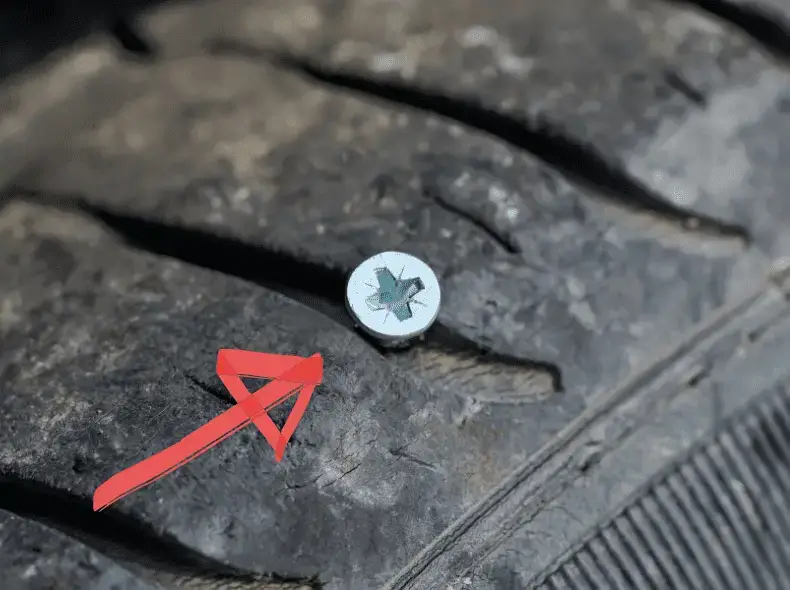
However, we still don’t know how long the screw is and won’t know until it is removed from the tire. Hopefully, it is a small one and is in the tread.
In this scenario, you may not notice any reduction in air pressure, and the screw may live in your tire quite happily for years and cause no issues.
You should never remove the screw without having a spare tire available or a puncture repair kit to hand so you can plug or patch the tire quickly.
The screw is very unlikely to come loose by itself. It is likely to be stuck fast, and it won’t fall out however fast you drive.
However, a rusty screw may corrode quicker once stuck in a tire due to being more exposed to rain and has a higher chance of eventually falling out as its circumference gets slightly smaller
What can happen, of course, is the screw moves around slightly within the tire. If it has penetrated all the way through, any slight movement can cause a slow puncture.
Did you know that as you drive, your tires warm up it becomes slightly more supple? In addition, as you turn the steering wheel, pressure is placed on one section of your tire more than the others.
These small movements and changes on the tire structure normally cause no concern at all to a tire in perfect condition, but to one with a screw in it can cause movement and leaks.
It makes sense to drive more conservatively when you have a screw in a tire, but even that may not stop a leak from eventually occurring.
The truth is that knowing how deep into the rubber the screw has and whether it is likely to move makes it very difficult to know precisely how long you can drive with a screw in your tire.
Be careful not to overinflate your tire, as this could add more outward pressure to the screw and result in the higher pressurized air being forced out past the screw.
Your tire will not get better with a screw in it. It may stay the same but is likely to cause a leak at some stage in the future.
It is far better to plan for a repair if your tire is in otherwise good condition and fairly new.
If your tire is showing other signs of wear and has been on your vehicle for more than half of its expected life, you may decide to replace it now rather than go through the process of taking the screw out and patching all plugging only to have to replace the tire anyway in another few thousand miles.
Screws in the gaps between the tread blocks should be repaired sooner than a screw in a tread block. If you have a screw in the sidewall, you have a decision to make, as the tire cannot be repaired if you remove the screw.
You can risk driving with it in situ or decides to get a new tire instead.
Although a screw in the sidewall is unlikely to fail catastrophically, there is always the chance of a blowout rather find a slow leak.
Never be tempted to remove the screw and patch or plug a sidewall. The sidewall creates structural integrity for the whole tire, and any repair is dangerous.
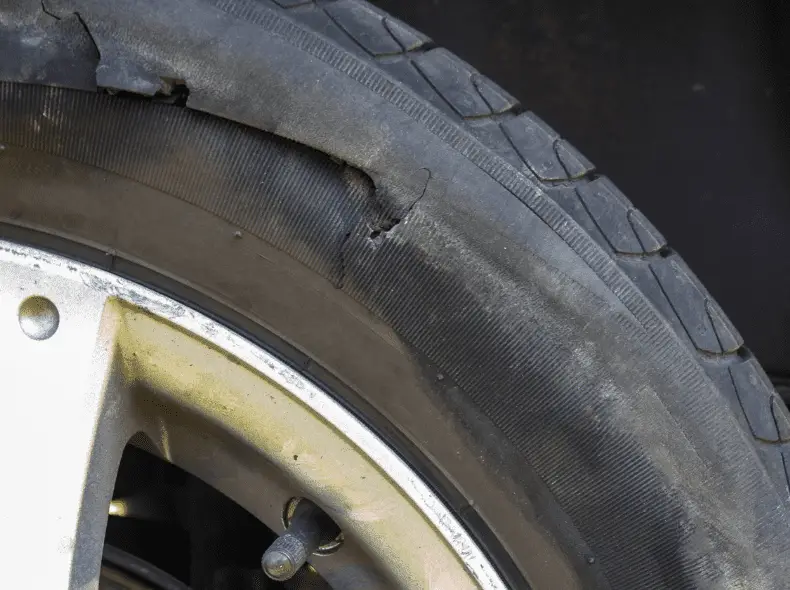
Should You Remove A Screw In My Tire
Sometimes things are better just left alone, which can be the case if you have a screw in your tire. Quite often in life, generally, we like to tidy things up and make them look as they should, and it is often the temptation when you see a screw in the tire.
It’s not always the best course of action, though.
Is the tire that has a screw in it leaking?
If the screw is in the center tread area, it must be removed and repair completed. If the screw is in the side wall, it is impossible to repair, and you will need a new tire.
A leak from a screw in the sidewall is very dangerous, and you shouldn’t drive as you risk a blowout.
If the tire with a screw is not leaking, you might decide to leave it alone. Either the screw has not penetrated through the tire and is not causing immediate risk of a leak, or it has penetrated all the way through but is so tightly embedded in the rubber it is not letting air pass.
Even if you have no leak now, it doesn’t mean that the screw won’t work its way through the tire and cause a leak, but you won’t know the length of the screw unless you pull it out.
By leaving the screw alone, you are second-guessing what may happen.
In Conclusion
Removing a screw from your tire is always best, even if it isn’t causing a leak now.
Removing a screw in the tread at a convenient time will mean you have less stress and potentially less expense and will be able to plan the best time to effect a repair or replacement.
Leaving the screw in situ could mean the tire leak becomes unmanageable, and you may be stranded with all the cost and time involved.





